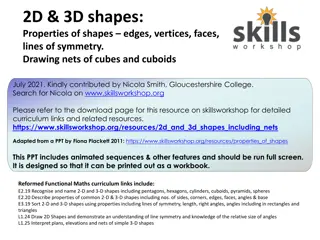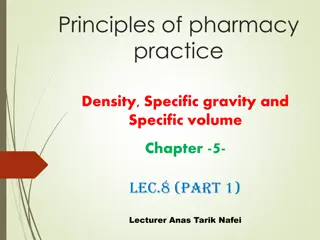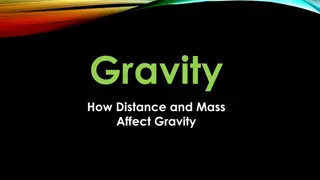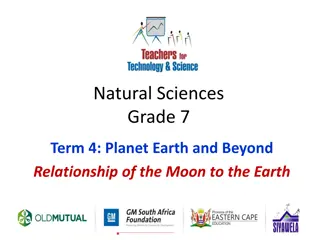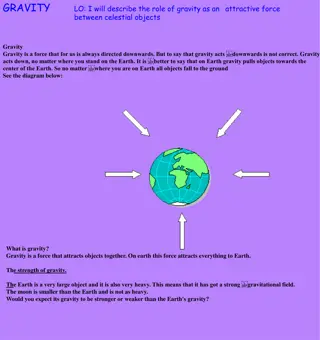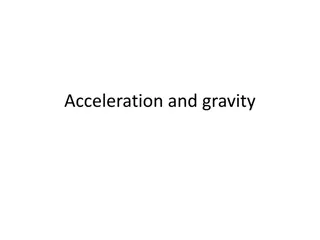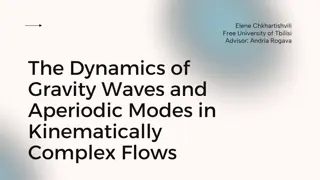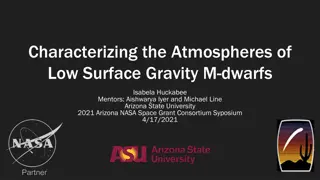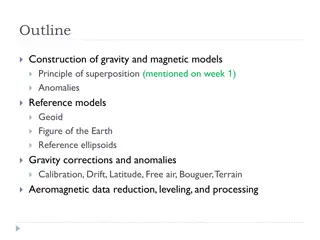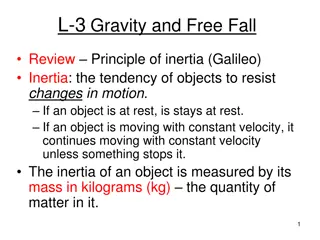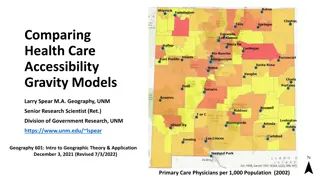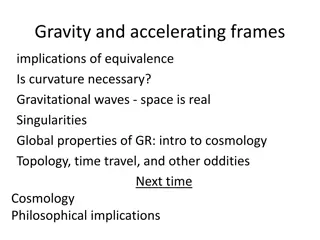Understanding Gravity: The Force that Shapes Our Universe
Sir Isaac Newton's discovery of gravity revolutionized our understanding of the universe, explaining the force that keeps us grounded on Earth and governs the motion of celestial bodies. Gravity, as described by the Law of Universal Gravitation, is an attractive force that acts between all objects in the universe, from atoms to stars. This force of nature influences the mass, weight, and gravitational attraction of objects, shaping the dynamics of our solar system and beyond.
Download Presentation

Please find below an Image/Link to download the presentation.
The content on the website is provided AS IS for your information and personal use only. It may not be sold, licensed, or shared on other websites without obtaining consent from the author. Download presentation by click this link. If you encounter any issues during the download, it is possible that the publisher has removed the file from their server.
E N D
Presentation Transcript
SPI 0807.12.4 Distinguish between mass and weight using appropriate measuring instruments and units. SPI 0807.12.5 Determine the relationship among the mass of objects, the distance between these objects, and the amount of gravitational attraction. SPI 0807.12.6 Illustrate how gravity controls the motion of objects in the solar system.
Who discovered gravity? a) Edwin Hubble b) Isaac Newton c) Thomas Jefferson d) Albert Einstein
______ is the measure of the force of gravity on an object a. mass b. weight c. density d. equation
A push or pull on an object is a/an . a. inertia b. gravity c. force d. momentum
The rate of change in speed or direction of movement. a) acceleration b) mass c) gravity d) friction
Key Words gravity law of universal gravitation Newton s First Law of Motion Inertia Weight mass
The Idea During the 1600 s, Sir Isaac Newton thought about why objects fall to Earth. Newton realized that a force acts on objects and pulls them toward Earth s center. He soon theorized that this force was everywhere in the universe, not just on Earth. Using Newton s theories, astronomers were able to explain the motions of the planets and other processes in the universe.
The Law of Universal Gravitation GRAVITY- is an attractive force that pulls objects toward each other. The LAW OF UNIVERSAL GRAVITATION states that the force of gravity acts between all objects in the universe. A gravitational attraction exists between any two objects, from the smallest particle of an atom to the largest stars.
Gravity Gravity is the force that keeps you grounded on Earth and prevents you from floating off into space. The law of universal gravitation explains that, just as you are attracted to Earth, Earth is attracted to you as well. You also attract all the other objects around you. But, our gravity is much smaller than Earth s, so we don t notice it.
Gravitational Force The gravitational force between two objects depends on two factors: MASS & DISTANCE Mass- is the amount of matter in an object. The more mass an object has, the more gravitational attraction it exerts on other objects. For small objects, such as two apples, this force is barely measurable. However, for larger objects, such as Earth and a weather satellite, the force is much greater. Earth s mass is so great it exerts a strong gravitational force on a satellite. This is why they don t fly off into space as it moves rapidly around the Earth.
Distance Distance also affects the force of gravity between two objects. The force of gravity is inversely related to the distance between the objects. As the distance between objects increases, the force of gravity between them decreases. Likewise, as the distance decreases, the force of gravity increases.
As objects move closer together, their pull on each other grows. As objects move farther apart, their pull on each other weakens. A good example is to consider a traveling spacecraft. As it moves away from Earth, the pull of Earth s gravity becomes weaker. At the same time, as the spacecraft moves closer to another planet, the pull of that planet s gravity increases.
Distance, Mass & Gravity Gravity attract all objects toward one another. m m 2m If mass increases, gravity increases. 2m If distance increases, gravity decreases. m m
Gravity & Orbits Since gravity pulls objects toward each other, what keeps the moon from crashing into Earth? Newton s first Law of Motion- explains that- An object at rest will stay at rest, and an object in motion will stay in motion, unless an unbalanced force acts on the object. INERTIA- is an objects tendency to resist a change in its motion. Inertia keeps a heavy box sitting in the same place on a ramp, where a light object would slide down. Inertia also keeps moving objects in motion along a straight path. The more mass the object has, the greater its inertia.
This diagram shows how inertia and gravity work together to keep the moon orbiting Earth. The moons inertia tends to cause the moon to travel continuously in a straight line. At the same time, Earth s `Gravity is pulling the moon toward Earth. These combined `Forces cause the moon to move in a curved path around Earth. `Without Gravity, the moon would fly off into space. `Without Inertia the moon would fall Into Earth. Earth Gravity Actual Orbit m o o n Inertia
Weight versus Mass As we discuss the effects of mass on gravity and inertia, you may wonder whether mass and weight are the same. NO- they are not. Mass- is the amount of matter in an object. Weight-is a measure of the pull of gravity on an object. Your mass is the same on the moon or in outer space as it is on Earth. You are made up of the same amount of matter no matter where in the universe you are. The moon is much smaller than Earth, so it s gravity is less. If you were measuring your weight on the moon you would weigh LESS.
Lets recap with . . . http://www.youtube.com/watch?v=ST6Z5- fcfLY&safe=active http://studyjams.scholastic.com/studyjams/jams/sci ence/solar-system/sgravity-and-inertia.htm





